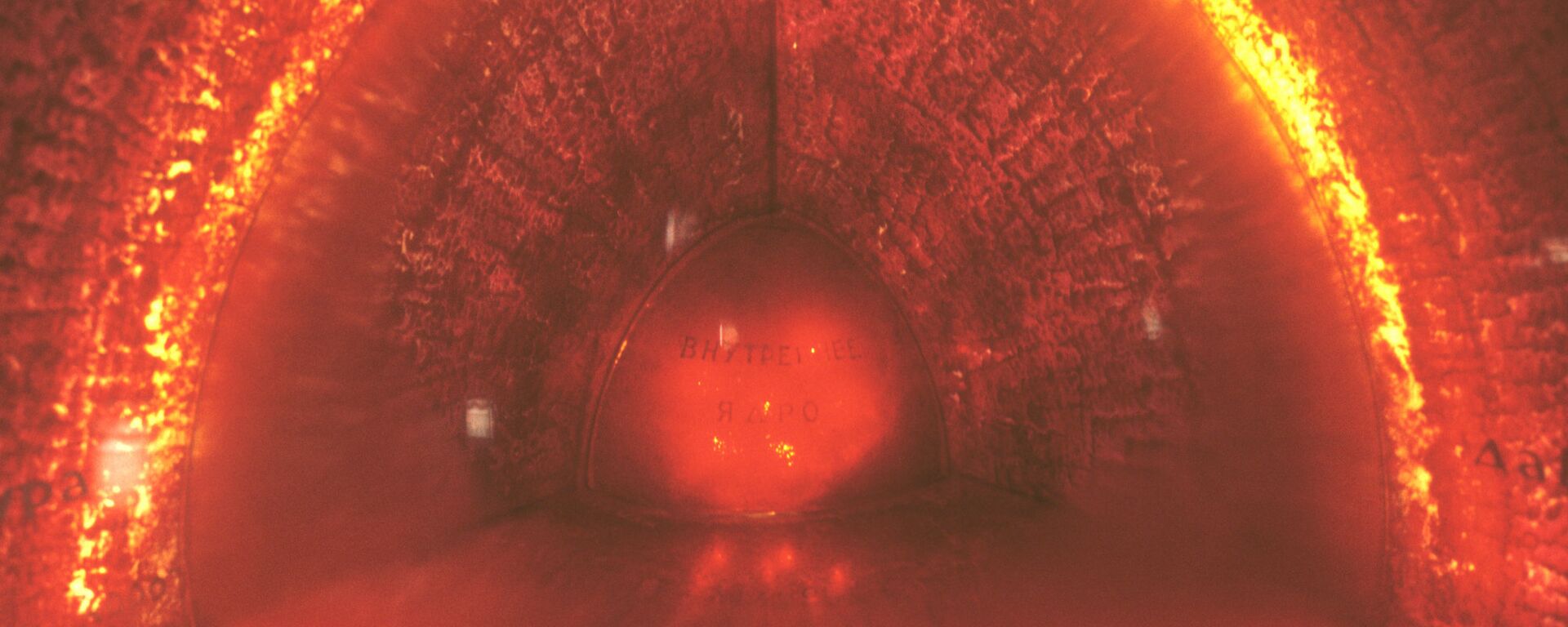https://sputnikglobe.com/20230706/scientists-reveal-earths-inner-core-much-more-similar-to-tapestry-of-fabric--1111688548.html
Scientists Reveal Earth’s Inner Core Much More Similar to 'Tapestry of Fabric'
Scientists Reveal Earth’s Inner Core Much More Similar to 'Tapestry of Fabric'
Sputnik International
After analyzing seismic data from 2,455 earthquakes, study author Guanning Pang says that the Earth’s inner core resembles a textured “tapestry of fabric.”
2023-07-06T03:41+0000
2023-07-06T03:41+0000
2023-07-06T03:39+0000
earth
science & tech
study
university of utah
inner core
beyond politics
https://cdn1.img.sputnikglobe.com/img/07e6/03/1f/1094357691_0:140:1920:1220_1920x0_80_0_0_a741a1c955428c0b3c0194a0d27d0436.jpg
After analyzing seismic data from 2,455 earthquakes, study author Guanning Pang says that the Earth’s inner core actually resembles a textured “tapestry of fabric.”Researchers examined seismic data from a worldwide web of sensing instruments created to detect underground nuclear explosions. The extra sensitive equipment was used to measure differences in seismic waves after they bounced off the core of the earth. However, instead of being consistent as one would expect with a smooth homogenous ball, the waves came back modified, indicating that the core is not as smooth as thought.The further the waves penetrated the core, the more pronounced the distortions were, implying the ripples in the core become more pronounced the deeper you go.Previous studies only observed a single seismic array and only measured parts of the core. That led Pang and other researchers to suspect the core was not as uniform as we first thought, and this new study provides more evidence that is the case. The researchers also indicated it is possible some liquid iron remains at the center of the Earth’s core, and that it will continue to cool and harden over time.The study authors hope the insights into the Earth’s core will provide information about its history and formation and by association, the formation of Earth’s magnetic field. It could also change the way scientists think about the Earth’s outer core and how heat from the center of the Earth reaches its crusty mantle.
https://sputnikglobe.com/20230125/earths-inner-core-rotation-seems-to-slow-study-claims-1106706009.html
earth
Sputnik International
feedback@sputniknews.com
+74956456601
MIA „Rossiya Segodnya“
2023
News
en_EN
Sputnik International
feedback@sputniknews.com
+74956456601
MIA „Rossiya Segodnya“
Sputnik International
feedback@sputniknews.com
+74956456601
MIA „Rossiya Segodnya“
earth, inner core, study, tapestry of fabric, guanning pang
earth, inner core, study, tapestry of fabric, guanning pang
Scientists Reveal Earth’s Inner Core Much More Similar to 'Tapestry of Fabric'
High school science books around the country describe the Earth’s inner core as a spherical, smooth ball of hardened iron, but a new study by seismologists at the University of Utah revealed that is not how the inner core of the Earth looks at all.
After analyzing seismic data from 2,455 earthquakes, study author Guanning Pang says that the Earth’s inner core actually resembles a textured “tapestry of fabric.”
Researchers examined seismic data from a worldwide web of sensing instruments created to detect underground nuclear explosions. The extra sensitive equipment was used to measure differences in seismic waves after they bounced off the core of the earth.
However, instead of being consistent as one would expect with a smooth homogenous ball, the waves came back modified, indicating that the core is not as smooth as thought.
“This signal that comes back from the inner core is really tiny. The size is about on the order of a nanometer," explains University of Utah seismologist Keith Koper, who oversaw the study. "So these baby echoes and reflections are very hard to see."
The further the waves penetrated the core, the more pronounced the distortions were, implying the ripples in the core become more pronounced the deeper you go.
“For the first time we confirmed that this kind of inhomogeneity [that the core is not a uniform mass] is everywhere inside the inner core,” Pang said.
Previous studies only observed a single seismic array and only measured parts of the core. That led Pang and other researchers to suspect the core was not as uniform as we first thought, and this new study provides more evidence that is the case. The researchers also indicated it is possible some liquid iron remains at the center of the Earth’s core, and that it will continue to cool and harden over time.
The Earth’s metallic core is responsible for the Earth’s magnetic field, which protects the Earth from the majority of cosmic radiation emitted by the Sun.
If the magnetic field did not exist or was much weaker, it is unlikely life would exist on Earth, or it would look much different.

25 January 2023, 19:01 GMT
The study authors hope the insights into the Earth’s core will provide information about its history and formation and by association, the formation of Earth’s magnetic field. It could also change the way scientists think about the Earth’s outer core and how heat from the center of the Earth reaches its crusty mantle.



